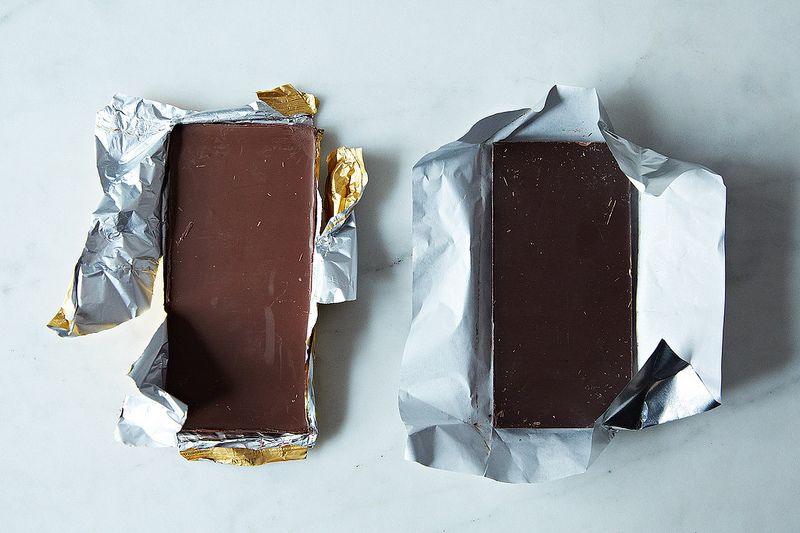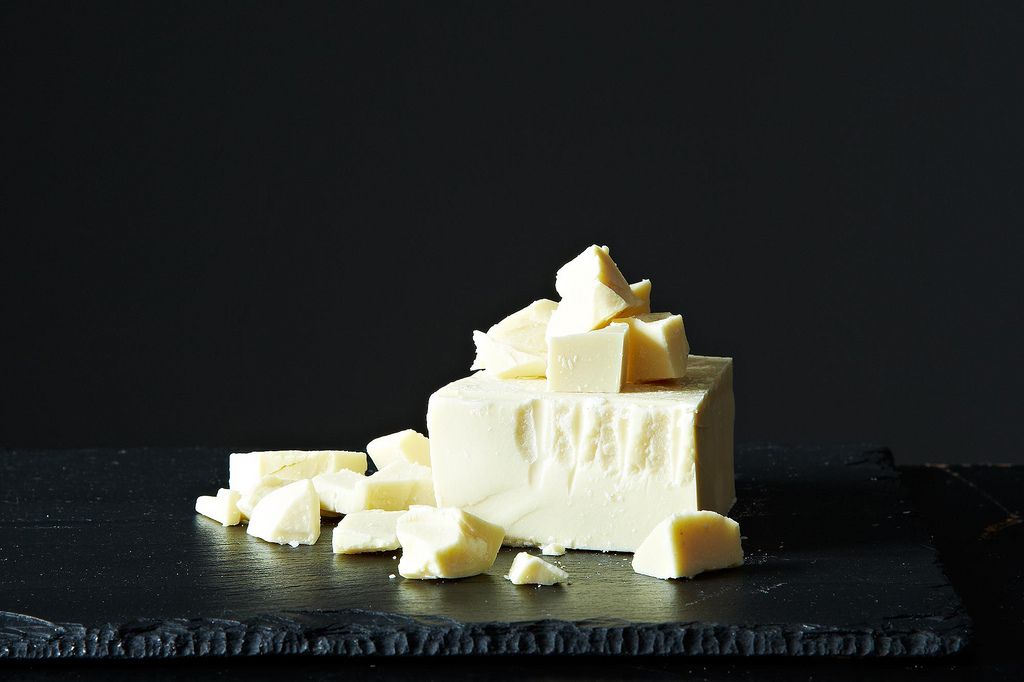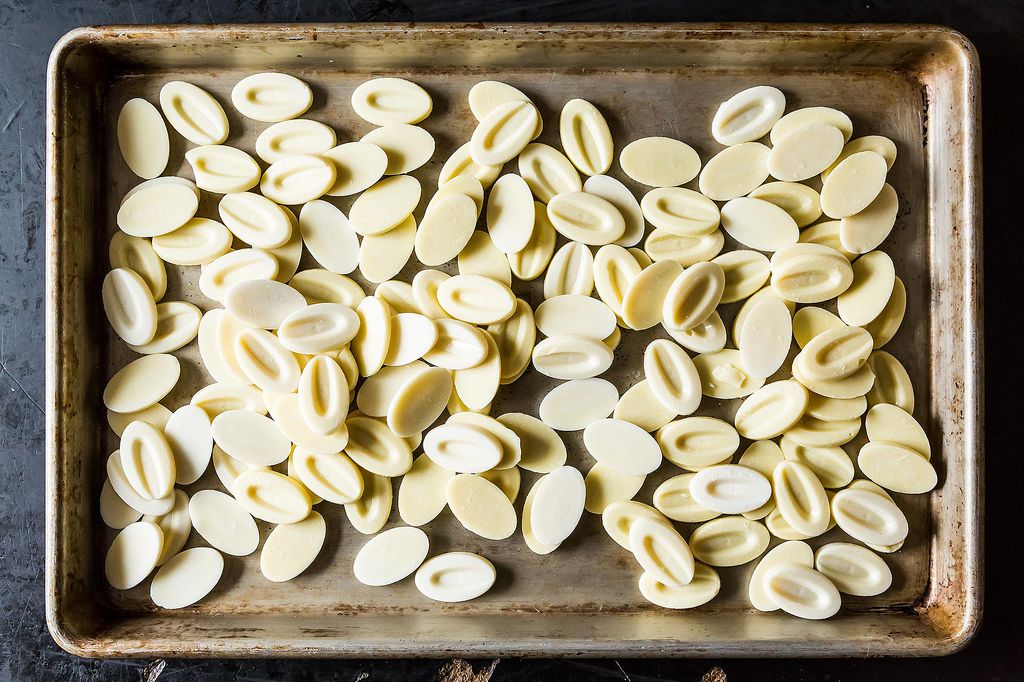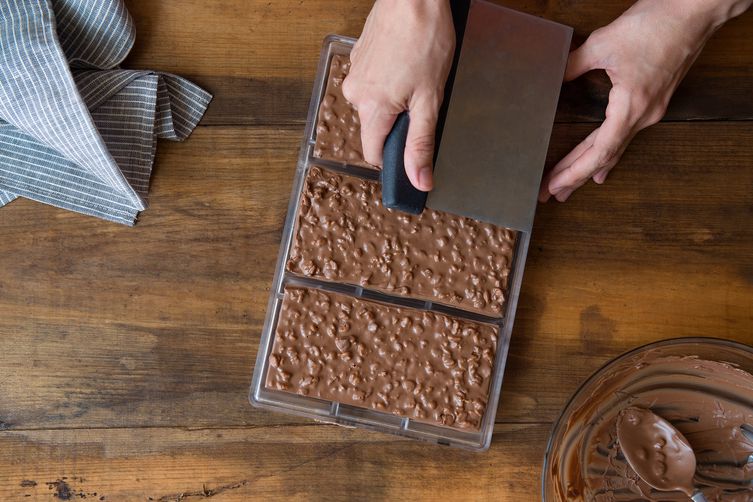Be it goat's milk-based, Hershey's Milk Chocolate, 75%-and-not-a-point-below, or blue M&Ms, we all have our chocolate allegiances. For example, mine is to anything made from a cacao bean.

Jonathan Grahm is a bit more particular with his chocolate choices—and with good reason. He's the chocolatier of Compartés Chocolate, a Los Angeles-based chocolate company known for their vibrant packaging and original flavor combinations (Lucky Charms in white chocolate is a favorite ours). A few weeks ago, he stopped by the office to introduce us to some of his favorite chocolates and imparted golden bits of advice like, "You don't have to be a man with a beard in Brooklyn eating 80% chocolate to enjoy it." Here are five of our favorite things he taught us during his visit:
1. White chocolate doesn't deserve the bad reputation it's earned.
Jonathan says that chocolate's growing perception as something medicinal, with dark chocolate considered to be healthy, has "pushed aside white chocolate as pedestrian or not sophisticated enough." But there's a place for the milky bar—Jonathan pairs it with flavors that a dark chocolate would over-power, like vanilla bean and rosemary. Jonathan adds that people shouldn't feel pressured by chocolate fanatics to stop eating white chocolate—all candy is about enjoyment, so why not eat what you enjoy? He says, "When I eat chocolate, I want something sweet and nostalgic—I'm going to eat something that makes me happy."


2. The cacao percentage on your chocolate bar can tell you a lot—but it isn't everything.
When purchasing a chocolate bar, look for anything that tells you the percentage of cacao, then choose your bar from that selection. Jonathan says, "If you're looking for good chocolate, look for percentages—some manufacturers are adding so many things and bringing down the cacao for profit so that they won't tell you the percentage at all. In its stead is vegetable oil and an unthinkable amount of other ingredients." If it has more than five ingredients, it may be worth leaving on the shelf.
More: Candy pairs excellently with all sorts of wines—as long as you have the right one.
At the same time, Jonathan says to keep in mind that not all cacao percentages are created equal. It's an indication of quantity, but doesn't reflect the quality of that cacao. For example, Jonathan says that he has a 73% cacao bar that tastes much richer and darker than his 76% bar because it's made of higher-grade cacao. There are other companies too that will advertise 60% cacao, but if they're at a hard-to-believe price point, it likely isn't a very high grade of chocolate or may not be fair trade. The bottom line: "You can learn a lot from the price of a chocolate bar."

3. As with wine, there's terroir in chocolate.
Just as the soil grapes are grown in is expressed in a finished wine, a South American bean is going to taste completely different from an African bean. Jonathan says that his favorite chocolate comes from Venezuala because it's grown next to rain forest and "the cross pollination from local fruit make the chocolate more complex and sweeter." While the origin of the bean isn't always marked on labels, it may be worth doing a deep-dive and asking a brand you love where their beans are from so you can snatch up a few bars when you do see that place indicated.
4. There are three types of cacao beans, and they all have a different flavor profile.
There's a reason (vegetable oil aside) that a mass-produced chocolate bar tastes different from a small batch bar: They use completely different cacao beans. While the forastero bean is used in bulk chocolate (which makes up for over 90% of the world's chocolate), the finer-flavored beans criollo and trinitario (a hybrid between forastero and criollo) are often used for smaller productions.


5. Chocolate doesn't pair well with Champagne—but it goes with just about everything else.
While Compartés has carried several chocolate Champagne truffles, he warns against eating chocolate with a glass of the real thing. Most Champagne is too dry and will make the chocolate taste bitter—plus the bubbles can alter the flavor of the chocolate, and not in a good way. Instead, Jonathan says he enjoys port and rosé with white chocolate, whiskey with dark chocolate, and coffee with all chocolate. In fact, scrap what he said about Champagne—since, as he also put it, "Everything tastes better with chocolate."
What's your favorite type of chocolate? Are you a closeted white chocolate fan? You can tell us (in the comments below!).
Photo of wine and chocolate and bowl of chocolate by Skye McAlpine; photo of chocolate making by Teresa Floyd; all others by James Ransom







See what other Food52 readers are saying.